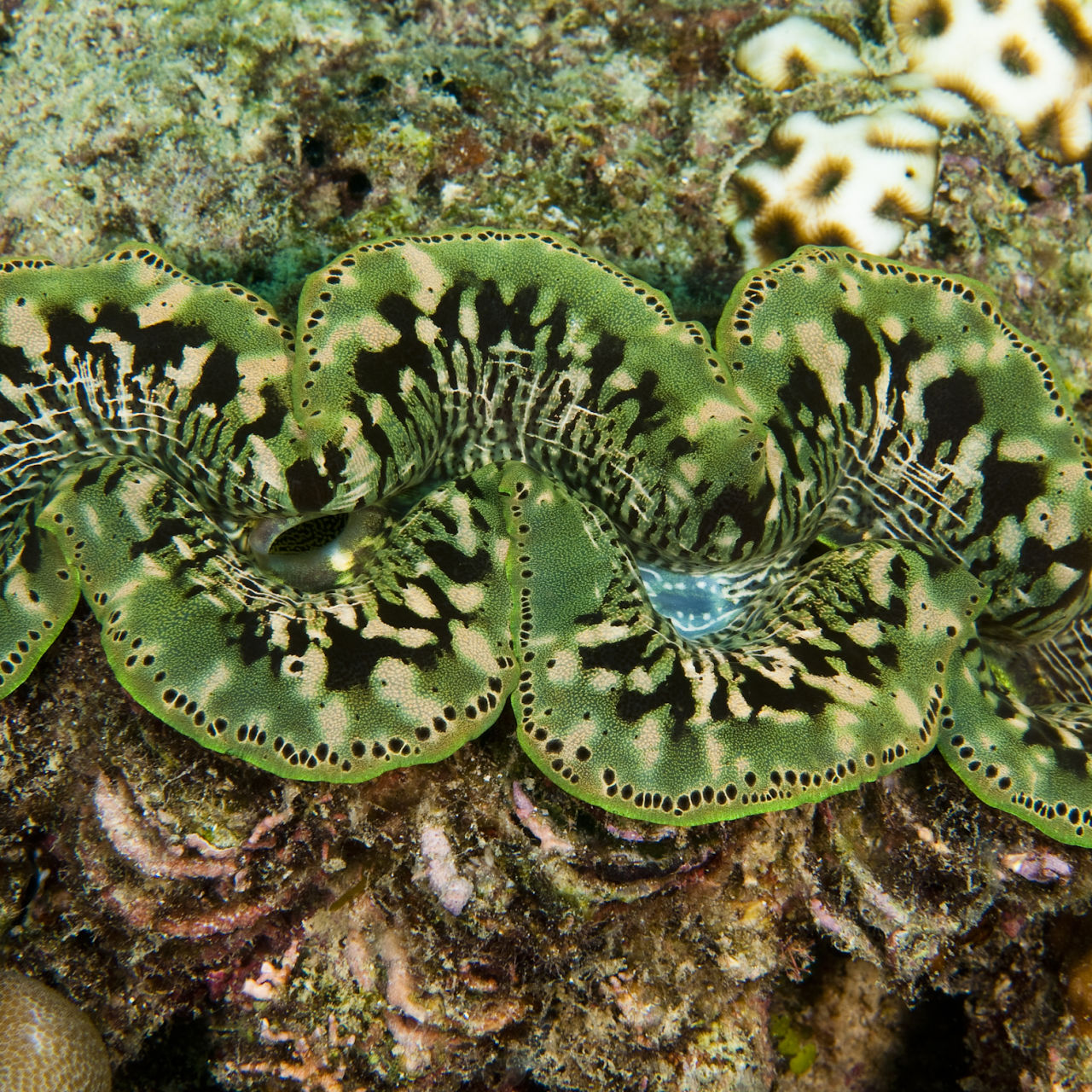Giant Clam
A mammoth mollusc, but not a man-eating one!

Kingdom
Animalia
Phylum
Mollusca
Class
Bivalvia
Order
Cardiida
Family
Cardiidae
Genus
Tridacna
#Description
As the largest bivalve mollusc, the giant clam weighs a great average of 200kg. This unique species is found to be a wide variety of colours, created by a contrast between algae inside the clam and the clam’s natural pigment. This vibrancy is an indicator of clam health—if the clam is unhealthy, the dying algae will bleach it to a bright white. Giant clams, when healthy, can live up to 100 years.
#Habitat and diet
Unlike many of the well-travelled Reef creatures, the Giant Clam remains on the reef for its entire life. It lays on the ocean floor, living at depth in broken coral or coral sand. Giant Clams are also found near China, Malaysia, and the Philippines.
Giant clams are filter feeders, taking in plankton through a large, central opening. The clam’s algae also produces metabolic waste products, which serve as a second nutritional source. This allows the clams to grow large even in nutrient-lacking waters.
#Clam colours




#A giant legend
Legends from the South Pacific tell of giant clams able to trap—and even devour—passing divers. Reputable marine manuals from centuries before warned against giant claims, detailing how a trapped diver could sever the clam and escape without drowning. In truth, giant clams are harmless to people. Their shells move far too slowly to trap any unsuspecting diver. Furthermore, there’s never been a recorded incidence of human death by clam!
#Giant Clam facts
1.
The largest giant clam ever discovered measured 137 centimetres and weighed around 250kg!
2.
In centuries before, giant clams were nicknamed ‘man-eating’ clams, due to the belief that they ate divers whole!
3.
By day, giant clams open their shells so that the algae inside them get a chance to photosynthesise.
4.
Giant clam spawning sessions are suggested to coordinate with the phases of the moon.
5.
The relationship between the giant clam and algae is considered a symbiotic, mutualistic relationship.
#Behaviour and Reproduction
Giant clams are hermaphroditic, producing both eggs and sperm. A fully-grown giant clam can release over 500 million eggs in one go. As they cannot fertilise themselves, they reproduce through broadcast spawning. When an egg is release, this triggers nearby giant clams to swell their mantles and contract their adductor muscles. This causes the clams to fill with water containing broadcasted sperm and eggs.
Though giant clams are sedentary, they can open and close their shells. Some clams are unable to close their shells completely, meaning there is always a gap left open.
# Threats
Globally the giant clam population has decreased substantially due to the aquarium trade and the fact that the giant clam’s abductor muscle is considered a delicacy. This lands it a place on the increasingly diverse list of vulnerable species. However, the species has never been allowed to be collected from the wild in Australian waters, so the species is reported to be in healthy numbers on the Great Barrier Reef.
#IUCN Red List status
The giant clam is listed as vulnerable (population trend decreasing) on the International Union for Conservation of Nature’s Red List of Threatened Species.
VU
Vulnerable ↓

